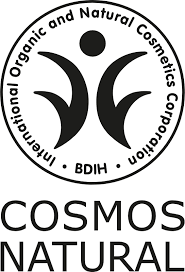EFFECTICS® Ethyl Ascorbic Acid (3-O-Ethyl Ascorbic Acid)
EFFECTICS® Ethyl Ascorbic Acid (3-O-Ethyl Ascorbic Acid)
Available
-
Estimated delivery time: 18-DEC-2025 - 22-DEC-2025
Couldn't load pickup availability
Ingredients (1223/2009) Cosmetics Regulation
Ingredients (1223/2009) Cosmetics Regulation
All variants have cosmetic compliance:
- Variant with Pentylene Glycol: Aqua (Water), Pentylene Glycol, EFFECTICS® Ethyl Ascorbic Acid (3-O-Ethyl Ascorbic Acid)
Composition (FDA): Water (A (>50 %)), Extract (B (25-50 %)), Glycol (C (10-25 %)) - Variant with Propylene Glycol: Aqua (Water), Propylene Glycol, EFFECTICS® Ethyl Ascorbic Acid (3-O-Ethyl Ascorbic Acid)
Composition (FDA): Water (B (25-50 %)), Glycol (B (25-50 %)), Extract (B (25-50 %)) - Variant with glycerin: Glycerin, EFFECTICS® Ethyl Ascorbic Acid (3-O-Ethyl Ascorbic Acid)
Composition (FDA): Glycol (A (>50 %)), extract (B (25-50 %)) - Variant with jojoba oil: Simmondsia Chinensis (Jojoba) Seed Oil, EFFECTICS® Ethyl Ascorbic Acid (3-O-Ethyl Ascorbic Acid)
Composition (FDA): Oil (A (>50 %)), Extract (B (25-50 %)) - Variant with squalane: Squalane, EFFECTICS® Ethyl Ascorbic Acid (3-O-Ethyl Ascorbic Acid)
Composition (FDA): oil (A (>50 %)), extract (B (25-50 %)) - Variant with sunflower oil: Helianthus Annuus (Sunflower) Seed Oil, EFFECTICS® Ethyl Ascorbic Acid (3-O-Ethyl Ascorbic Acid)
Composition (FDA): Oil (A (>50 %)), Extract (B (25-50 %)) - Variant as powder extract: EFFECTICS® Ethyl Ascorbic Acid (3-O-Ethyl Ascorbic Acid), maltodextrin
Composition (FDA): extract (A (>50 %)), maltodextrin (C (10-25 %))
Composition (1169/2011) Food Regulation
Composition (1169/2011) Food Regulation
Variants with propylene glycol, glycerine, sunflower oil or as powder extract have food compliance:
- Variant with propylene glycol: water, humectant: propylene glycol, EFFECTICS® Ethyl Ascorbic Acid (3-O-Ethyl Ascorbic Acid)
- Variant with glycerine: Humectant: Glycerine (vegetable), EFFECTICS® Ethyl Ascorbic Acid (3-O-Ethyl Ascorbic Acid)
- Variant with sunflower oil: Sunflower oil, EFFECTICS® Ethyl Ascorbic Acid (3-O-Ethyl Ascorbic Acid)
- Variant as powder extract: EFFECTICS® Ethyl Ascorbic Acid (3-O-Ethyl Ascorbic Acid)
Technical data sheet
Technical data sheet
Compliance
Compliance
Variants with glycerine, sunflower oil or as a powder extract can be obtained with COSMOS, Natrue and/or EU Organic Regulation (Regulation (EU) 2018/848) compliance on request. Please use our industry inquiry form.
CAS number
CAS number
86404-04-08
Use
Use
This product can be used in a variety of ways in the cosmetics and food industries.
Recommended application concentration
Recommended application concentration
0.5-15%
Packaging
Packaging
EFFECTICS® Ethyl Ascorbic Acid (3-O-Ethyl Ascorbic Acid): plastic containers.
Organoleptics
Organoleptics
Visual evaluation: Fine, white powder
Color evaluation: White
Origin
Origin
Europe and the rest of the world. Organic goods are preferred. Please note that this product contains organic ingredients that cannot be tested for biodegradability. Such ingredients were therefore not taken into account in the assessment.
Chemical-physical properties
Chemical-physical properties
pH: 3,9-7,2
Density: 1.03-1.06
Refractometry: 1.28-1.43
Safety data sheet
Safety data sheet
This is provided by dynamic characteristics and may not fully correspond to your language or regulatory space: Link
We are working hard to achieve even greater integrity here.
Analyzes
Analyzes
This is provided by dynamic characteristics and may not fully correspond to your language or regulatory space:
Analysis [s], [a]:
Name: EFFECTICS® Ethyl Ascorbic Acid (3-O-Ethyl Ascorbic Acid)
Analysis date:
Batch: 60002; (EC) No. 1223/2009
Supplier: CONIUNCTA
Preservative
Preservative
None
Microbiology
Microbiology
Total number of aerobic mesophilic bacteria / g / Method: ISO 21149:2022-08: < 10; Total number of yeasts and molds / g / Method: ISO 16212:2022-08: < 10; Total number of aerobic mesophilic microorganisms (bacteria + yeasts + molds) / g / Method: ISO 17516:2014-10: < 10; Unspecified microorganisms (also includes gram-negative bacteria such as Pluralibacter gergoviae and Burkholderia cepacia) / g / Method: ISO 18415:2022-08: not detectable; Specified microorganisms (Pseud. aeruginosa, E.coli, Staph. aureus, Candida albicans) / g / Method: ISO 18415:2022-08: not detectable
Durability
Durability
Store in a dry place between 10 and 30°C in the originally sealed container: 24 months.
Flash point
Flash point
> 100 °C
Shipping information
Shipping information
The product will be sent to you depending on your customer status.
Disclaimer
Disclaimer
It cannot be ruled out that a color change may occur during storage and depending on the temperature. If cloudiness or precipitation occurs, the product would need to be filtered. This does not affect the quality of the product. This is a raw material intended to be used in the manufacture of cosmetics. The images shown here are for illustrative purposes of the liquid and are to be considered as approximate only. The products are guaranteed to meet the specifications listed on their label, packaging and/or certificate of analysis at the time of shipment or for the expressly stated period. CONIUNCTA® disclaims all express or implied warranties, including but not limited to implied warranties of merchantability or fitness for a particular purpose, with respect to our products or related information. The customer is solely responsible for determining the suitability of CONIUNCTA® products for their own applications, uses and processes, including ensuring that there is no infringement of third party intellectual property rights. CONIUNCTA® shall not be liable for incidental, consequential, indirect, exemplary or special damages of any kind arising from the use or failure of the products. All sales are subject to CONIUNCTA®'s complete terms and conditions of sale. Prices are subject to change without notice and CONIUNCTA® reserves the right to change or discontinue products without notice.
FAQ
FAQ
Please read our FAQ.
Ethyl Ascorbic Acid (3-O-Ethyl Ascorbic Acid) – Stabilized Vitamin C for Radiant Skin
Ethyl Ascorbic Acid (3-O-Ethyl Ascorbic Acid) is an innovative and stabilized form of Vitamin C, characterized by high efficacy and skin compatibility. This modified Vitamin C derivative offers all the benefits of Vitamin C, such as brightening, antioxidant, and collagen-boosting properties, combined with improved stability and increased skin penetration.
The Features of Ethyl Ascorbic Acid
3-O-Ethyl Ascorbic Acid is a water- and oil-soluble derivative of Vitamin C, stabilized by the attachment of an ethyl group to the ascorbic acid molecule. This structure protects the molecule from oxidation, making it longer-lasting and more effective in cosmetic formulations.As soon as it penetrates the skin, it is enzymatically converted into pure vitamin C, thereby unleashing its full effectiveness.
The benefits of ethyl ascorbic acid
- Antioxidant protection: Neutralizes free radicals and protects the skin from oxidative stress and environmental damage.
- Brightening effect: Reduces pigmentation spots and gives the skin a radiant, even complexion.
- Collagen promotion: Supports collagen synthesis, improves skin elasticity, and reduces the appearance of fine lines and wrinkles.
- Skin compatibility: The stabilized structure makes ethyl ascorbic acid less irritating than pure vitamin C, making it suitable for sensitive skin.
- Stability: Compared to conventional Vitamin C, Ethyl Ascorbic Acid is significantly more stable against light, heat, and oxidation.
Recommended Usage Concentration
Ethyl Ascorbic Acid is used in cosmetic formulations at a concentration of 0.5–15 %, depending on the desired intensity and product application. It is excellent for serums, creams, toners, and masks.
Combination with Other Active Ingredients
The effectiveness of Ethyl Ascorbic Acid can be enhanced by combining it with other active ingredients such as Niacinamide, Hyaluronic Acid, or Ferulic Acid. These combinations promote skin hydration, strengthen the barrier function, and maximize the antioxidant effect.
Clinical Studies and Efficacy
Studies show that ethyl ascorbic acid improves skin texture, reduces hyperpigmentation, and stimulates collagen production. Visible improvements in skin appearance, including a more radiant and even complexion, were observed after just a few weeks of use. Source: International Journal of Cosmetic Science
Conclusion: Ethyl Ascorbic Acid – The Future of Vitamin C in Skincare
With its stabilized properties and improved skin penetration, ethyl ascorbic acid is an essential active ingredient in modern skincare. It offers all the benefits of Vitamin C in a more stable and effective form, combining both antioxidant protection and brightening and anti-aging effects.Leverage Ethyl Ascorbic Acid (3-O-Ethyl Ascorbic Acid) to enrich your formulations with a highly effective and versatile active ingredient. Sources: Advanced Cosmetic Research, Natural Dermatology Insights











